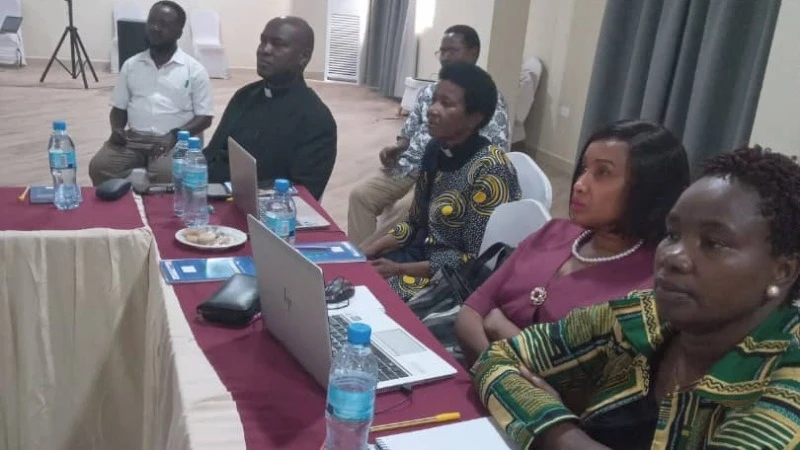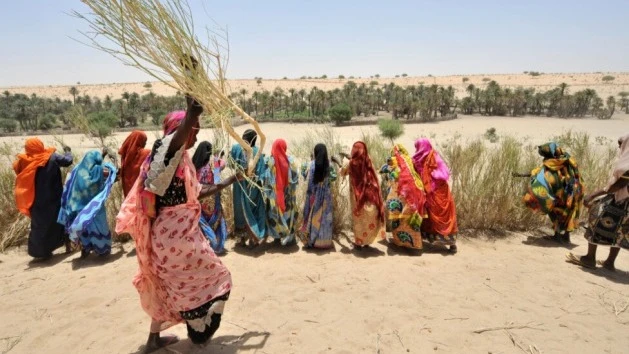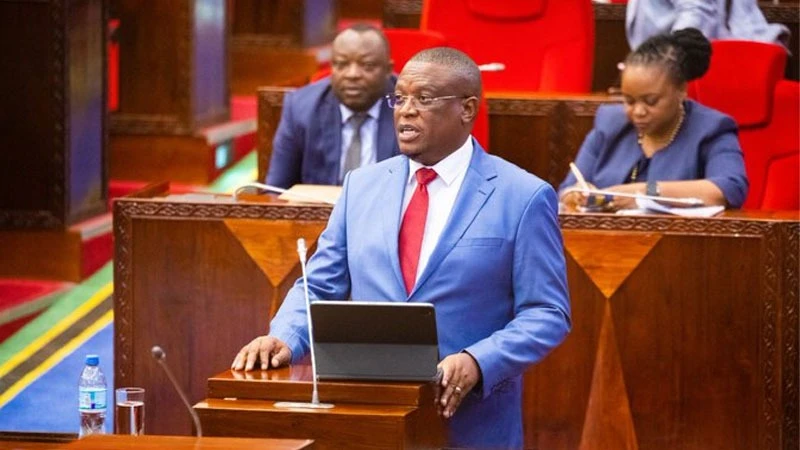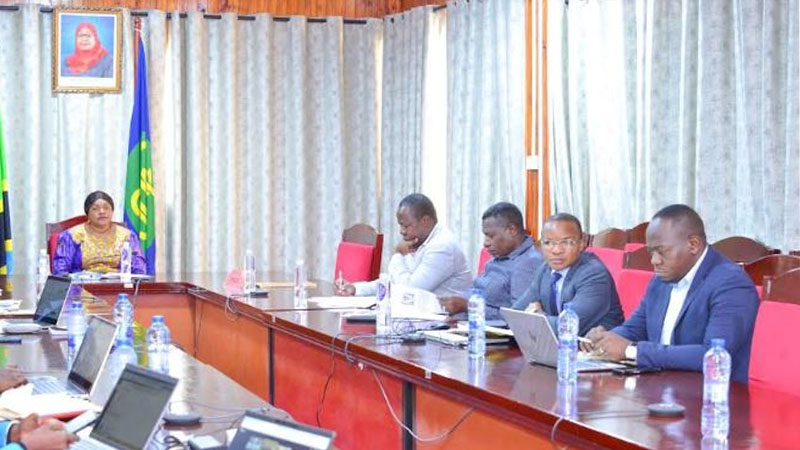PPP crucial for developing irrigation infrastructure, mitigate climate change and bolster food security

TANZANIA has been grappling with the persistent effects of climate change, experiencing adverse weather patterns year after year. The delayed or reduced rainfall has resulted in prolonged droughts, posing significant threats to food security across the nation.
Conversely, when heavy rains come, they often bring about devastating floods. Recent years have seen an alarming increase in flood occurrences, impacting not only urban centers but also rural areas like Rufiji and beyond. In light of these challenges, the pressing need to bolster irrigation infrastructure becomes even more apparent.
Strengthening irrigation systems can provide a vital lifeline, offering resilience against erratic weather patterns and ensuring a more sustainable and secure food supply for our communities.
The government has persistently pursued a range of strategies aimed at optimizing rainfall for agricultural and economic purposes, primarily through the construction of irrigation infrastructure spanning various regions of the country. In the Ministry of Agriculture's budget for the fiscal year 2023/2024, substantial emphasis was placed on the expansion of the irrigation network, with the goal of increasing coverage from 727,280.6 to 822,285.6 hectares.
Despite this concerted effort, it's important to note that the expanded coverage still accounts for only a fraction - a mere 2.7 percent of the vast 29.4 million hectares deemed suitable for irrigation farming nationwide. This highlight both the progress made and the considerable gap that remains to be addressed in realizing the full potential of irrigation agriculture in Tanzania.
Despite these commendable efforts, a substantial disparity persists between the actual requirements for irrigation infrastructure and the government's capacity to independently execute such projects. The crux of the matter lies in the considerable financial investment demanded by the implementation of irrigation initiatives.
Should the burden fall solely on the government, the timeline for completing these crucial projects in deserving regions would be significantly protracted, potentially spanning many years. This underscores the pressing need for innovative solutions and collaborative approaches to bridge the funding gap and expedite the development of irrigation infrastructure across the nation.
As we grapple with financial constraints delaying the implementation of these strategies, the resultant damages continue to escalate unabated. The repercussions are dire: from drought-induced food insecurity to the devastation wrought by floods, resulting in loss of lives, property destruction, and disruption of various citizen activities.
Moreover, the aftermath often includes the outbreak of waterborne diseases such as cholera, further compounding the societal challenges. Given these pressing circumstances, the imperative solution lies in embracing Public-Private Partnership (PPP) models.
Collaborating with the private sector not only offers a viable avenue to bridge the budgetary shortfall but also brings forth invaluable expertise, resources, and innovative solutions essential for accelerating the development of irrigation infrastructure.
The private sector stands poised to offer a wealth of experience, resources, and innovation that can significantly bolster the efficiency and expediency of irrigation infrastructure construction. Through the mechanism of PPP, the government can effectively leverage private sector investment to propel irrigation projects forward.
By fostering avenues for commercial collaboration, such partnerships incentivize private sector participation, injecting much-needed capital and expertise into irrigation initiatives.
The private sector, when properly coordinated, can utilize innovative financial models, including instruments such as bonds and equities, to pool funds from individuals, private companies, government agencies, and parastatals. With such collaboration, we can mobilize sufficient funds to invest in constructing irrigation infrastructure."
Moreover, the private sector's involvement extends beyond mere financial contributions; it encompasses the introduction of cutting-edge technologies, advanced management practices, and substantial financial capabilities essential for the conception, construction, and operation of irrigation infrastructure.
These innovations not only enhance the efficacy of irrigation systems but also streamline project implementation processes, enabling swifter progress towards achieving project milestones.
Furthermore, by sharing the responsibility with the private sector, the government can alleviate the burden of sole financial responsibility and administrative oversight. This collaborative approach not only distributes risk but also ensures that resources are deployed more effectively and transparently, maximizing the impact of every investment dollar.
Ultimately, by harnessing the synergies between public and private entities, we can catalyze the development of irrigation infrastructure, ushering in a new era of agricultural productivity, economic prosperity, and sustainable resource management.
Irrigation infrastructure represents a lucrative and remarkably efficient venture, particularly from a financial standpoint. Financial institutions extending loans for the development of such infrastructure can be assured of timely repayment and sound investment returns.
The rationale behind this assurance lies in the robust market demand for agriculturally productive land equipped with irrigation systems. Unlike rain-fed agriculture, which is subject to the whims of unpredictable weather patterns, irrigated farms offer a reliable and consistent yield regardless of rainfall fluctuations.
This certainty in crop production serves as a cornerstone for agricultural enterprises, empowering farmers with a dependable means of income generation and business expansion. By circumventing the uncertainties associated with rain-dependent agriculture, farmers operating on irrigated land can optimize their cultivation practices, plan their production cycles more effectively, and mitigate the risks of crop failure due to adverse weather conditions.
Moreover, the stability and predictability afforded by irrigation infrastructure instill confidence among financial institutions, encouraging them to extend credit facilities to farmers and irrigation project developers. In doing so, banks and other lending institutions not only facilitate the expansion of irrigation infrastructure but also stimulate economic growth within rural communities.
In essence, the symbiotic relationship between irrigation infrastructure and financial institutions underscores the profitability and resilience of agriculture as a business venture. By enabling farmers to harness the full potential of their land through irrigation, banks play a pivotal role in fostering agricultural prosperity, food security, and economic development
Irrigation farming offers farmers unparalleled control over the entire production cycle; from the initial planting of seeds to the final harvest. This heightened level of control empowers farmers to respond effectively to market demands, optimize cultivation practices, and elevate the overall quality of their crops.
Consequently, the enhanced productivity and marketability of irrigated crops translate into increased value for farmers' produce. This aspect of irrigation agriculture is particularly appealing to banks, as it significantly improves the likelihood of farmers repaying their loans promptly and at favorable interest rates.
Recognizing these dynamics, financial institutions can discern substantial opportunities in lending for irrigation infrastructure projects, given the manifold financial benefits and community development outcomes associated with such investments.
Forging partnerships with both the government and private sector to provide funding for irrigation projects emerges as a pivotal strategy in fostering sustainable agriculture and economic progress.
Moreover, the expansion of irrigated agriculture areas holds the promise of bolstering employment prospects for the youth within the agricultural sector. By affording youth greater certainty and optimism in engaging with agriculture, facilitated by access to reliable irrigation water sources guaranteeing robust and sustainable yields, we can incentivize their participation in farming activities, thereby mitigating unemployment challenges in the country.
Additionally, deliberate and strategic efforts in crafting investment policies aimed at attracting foreign investors to participate in irrigation infrastructure construction can yield significant dividends. Such initiatives serve to amplify the coverage of irrigation infrastructure, thereby reducing the susceptibility to flood-related disasters triggered by rainfall events and fortifying national food security measures.
The collaboration between the government and the private sector in the construction of irrigation infrastructure stands as an imperative cornerstone in our national development agenda. By pooling together resources, expertise, and innovation from both sectors, we can effectively address the multifaceted challenges posed by climate change, particularly in the agricultural sector.
Through concerted efforts and synergistic initiatives, we have the potential to mitigate the adverse impacts of climate change, such as droughts and floods, which jeopardize food security and livelihoods across our nation. The establishment of robust irrigation infrastructure not only enhances our resilience to climatic uncertainties but also strengthens our capacity to sustainably produce food for our growing population.
Expanding irrigation infrastructure in regions like the Rufiji River basin holds immense potential for significantly boosting agricultural production. With a well-developed irrigation system in place, these areas can yield abundant crops, not only to meet local food demands but also to generate surplus for exportation, thereby contributing to food security and economic growth.
Furthermore, the collaborative endeavor holds the promise of generating meaningful employment opportunities for our youth, who represent a vital demographic segment of our society. By expanding irrigated agriculture areas and fostering a conducive environment for youth engagement in farming activities, we can empower them with the tools and resources needed to secure their livelihoods while contributing to the nation's agricultural productivity and economic growth.
In essence, the partnership between the government and the private sector in advancing irrigation infrastructure development is not merely an option but a necessity. It is through this collaborative approach that we can navigate the complex challenges of our time, foster resilience in our agricultural systems, and pave the way for a more prosperous and sustainable future for generations to come.
Frank Abel is Senior Programme Accountant at Amref Health Africa Tanzania and one of stakeholders of sustainable development focusing more on effect of climate change.
Top Headlines
© 2024 IPPMEDIA.COM. ALL RIGHTS RESERVED























